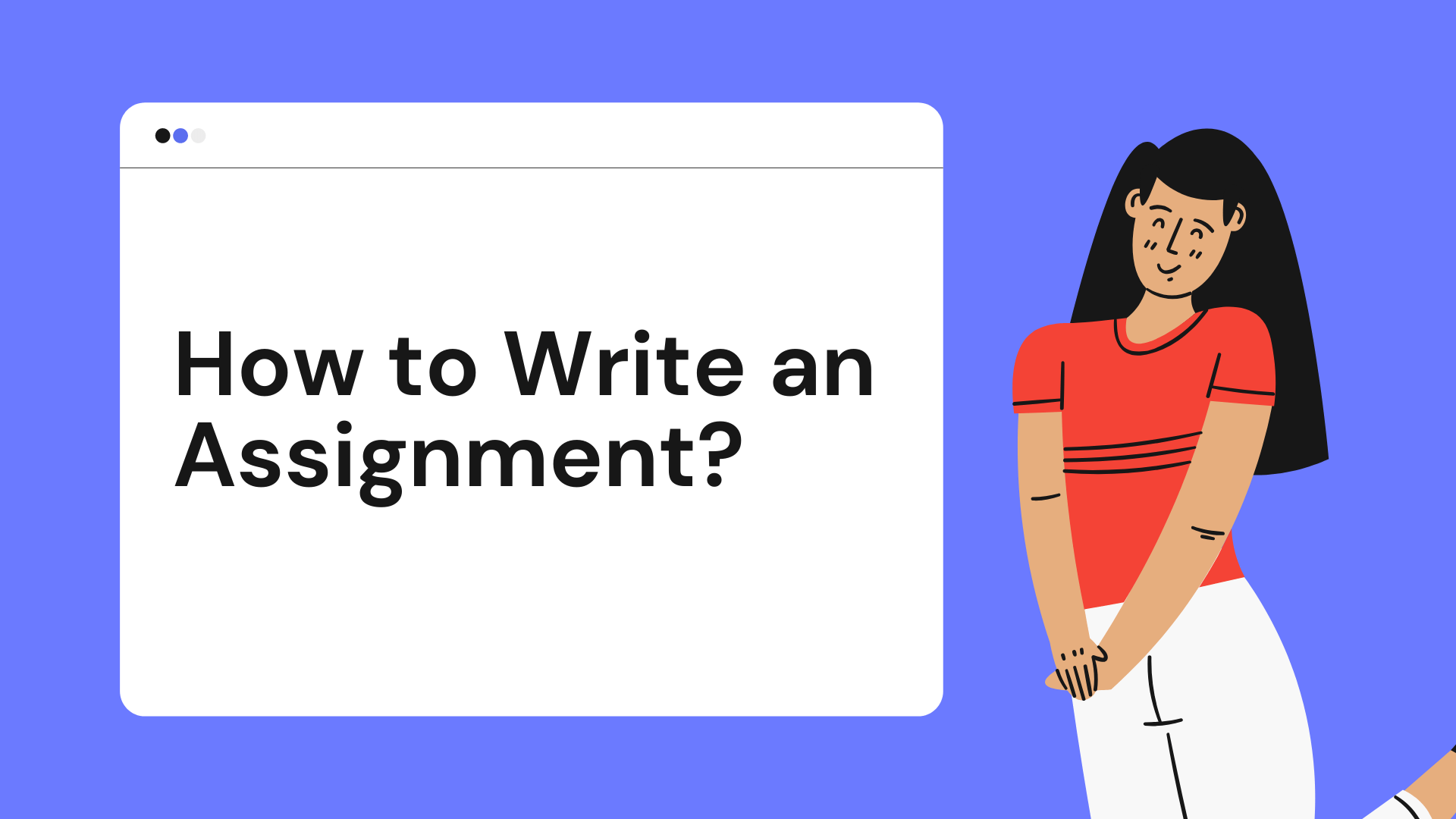How to Write an Assignment: Your Personal Effective Guide
Table of Contents

What is an Assignment and Why Do We Need it?
An assignment is a set task students or employees must complete as part of their study or job role and is usually presented in written form. Assignments include customized essays, term papers, reports, research proposals, reflections, case studies, and dissertations. The purpose of an assignment is to help students or employees learn and develop. So, it’s very useful to find out how to do an assignment! If you don’t have enough time you can ask for assignment writing help from our service.
Assignment Structure
Assignments can vary greatly in size and structure. The simplest assignment structure is a simple essay that will consist of 3 sections:
- An introduction (around 10% of the total word count)
- 3-5 main body paragraphs (around 75-80% of the total word count).
- A conclusion (around 10-15% of the total word count)
More complex and detailed assignments, like a research paper or dissertation, may involve additional sections and can be lengthy. They may consist of all or some of the following:
- Title/cover page (not included in word count)
- Abstract (no more than 250 words or one word processed page of double spaced, font size 12 text approx.).
- Introduction (around 10% of word count)
- Methodology (around 25-35% of word count)
- Findings/results (around 25-35% of word count)
- Discussion (around 25-35% of word count)
- Conclusion (around 10-15% of word count)
- Reference list or bibliography (not included in word count).
- Appendices (not included in word count and only if applicable) for incorporation of material that would have been too lengthy in the assignment body). For instance, raw data, tables, photos, maps, computer programs, sheets of music, survey or interview questions, and questionnaires.
So, How to Write an Assignment?
Follow our 8 simple steps of assignment writing:
- Ensure to thoroughly read the assignment brief or task sheet. Analyze what is required and make notes when your educational instructor explains it. Ask your educational instructor about parts you do not understand and discuss your initial ideas and plans with them, to help you start on the right track. It can be tempting to dive straight into the task, but if you waste time through mis-understanding the task and doing things wrong, it will be frustrating and a waste of your time.
- Locate relevant and reliable sources of information. Sources may include your course materials, recommended literature, online scholarly/academic literature, or consultation with topic experts.
- Create an assignment plan to help you organize and structure the information logically.
- Write your first draft according to your assignment plan. Decide on your main point for each body paragraph and don’t worry about spelling, punctuation or grammatical errors yet as you may change some things and can proofread it later. Don’t spend too much time trying to make this draft perfect as it will change!
- Have a break! It will be easier to think straight and spot errors and problems with your work when you have had a rest from it.
- Read your draft and check everything makes sense, is in logical order, contains all the information you want it to, and has in-text citations (formatted according to your educational establishment’s required in-text citation style) for any quotes, facts, statistics, etc. you have included. Correct all spelling, punctuation, and grammatical errors.
- Compile your bibliography or reference list according to your educational establishment’s required citation style and version (e.g., APA 6, APA 7, MLA 8, MLA 9, Harvard, Chicago, etc.). Online citation generators can save you a lot of time and effort but bear in mind no online citation generator is guaranteed to be 100% accurate all the time. You may need to scan over the completed reference list/bibliography after generating it online to check its right.
- Number your pages (according to the required style) and insert headers/footers (if applicable). Write your title page and you are done! A title page often includes the name of the educational establishment, the assignment title, the student or employee name, the course title, the educational instructor’s name, and finally the date the assignment is due.
Find the writer according to your requirements
- AssignmentBro is a team of experienced writers in any field of academic research
- We thoroughly choose writers with advanced multistep selection process
- Our writers work according to the highest academic standards
Useful Assignment Writing Tips
Main tip what will help with your assignment that our service can help with any difficulty kind of assignments. From do my finance homework for me service to marketing assignment help.
To write a good assignment read these easy tips!
- Actively listen! When your instructor is explaining the assignment, be sure to listen, make notes and ask questions.
- Don’t forget to use your class notes, class textbooks, course reading lists, and PowerPoints. Your instructor will have provided all of this for you to utilize.
- Start backwards! After carrying out your research, some people find it sier to write their conclusion first. The conclusion is essentially an assignment summary. This way you have a clear idea of in which direction your writing needs to go in. Then write up the main body, leaving the abstract/introduction until last.
- If you are unsure about how to write an assignment introduction, just remember it normally consists of 3 basic parts (background/general topic information, information about a particular aspect of the general topic, and a thesis statement. For example, the American economy (general topic), hyper consumerism in American culture (a particular aspect of the general topic), ‘Currently, the most significant problem with the American economy is hyper consumerism’ (thesis).
- To write assignments, you will need to use academic language, be clear and to the point. Informal ‘chatty’ language, contractions, and slang will generally not be appreciated by your assessor (excluding direct quotes). The same goes for spelling, punctuation, and grammatical errors, so don’t skip the proofreading stage!
- Remember, you will normally be expected to back up your arguments/points with relevant and reliable sources of cited evidence, sometimes less than 5 years old. Use Google Scholar or similar academic literature related search engines to help you ‘weed out’ poor information sources. And no…Wikipedia is not a reliable source!
- Keep in mind that if you are asked to write an assignment for university, rather than write an assignment for college, you will need to take full responsibility for your assignments, often with a longer period of time in which to complete them. You will still have access to uni assignment writing help, but instructors may not be able to help you to the extent that college lecturers would.
- If you need to learn how to write an assignment for the US college, all the general guidance already provided applies, but assignments in US colleges tend to be more frequent and shorter than the UAE. Also, US grades range from A through to D, with only F being considered a failure.
In summary, to write an academic assignment you need to actively listen, conduct effective research, think analytically, and write in a formal and succinct manner. However, taking it a step at a time and following our suggestions can help you on your way to creating a great assignment!


 Log In
Log In
